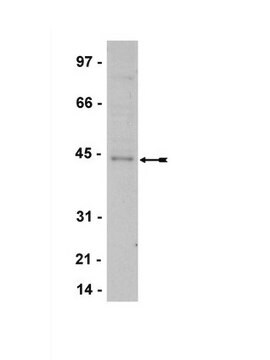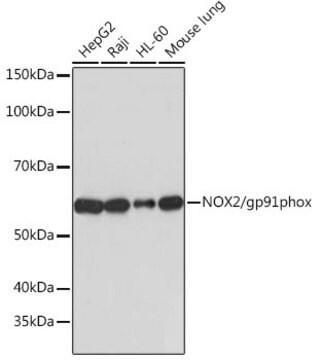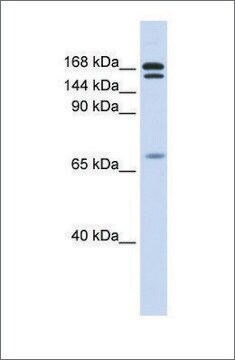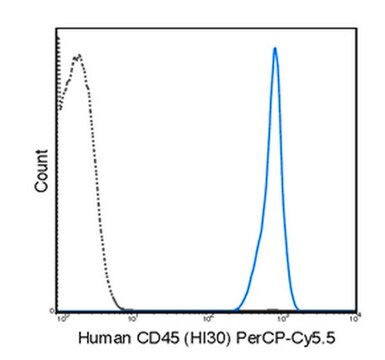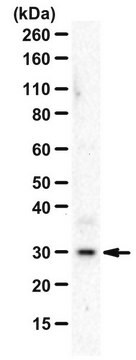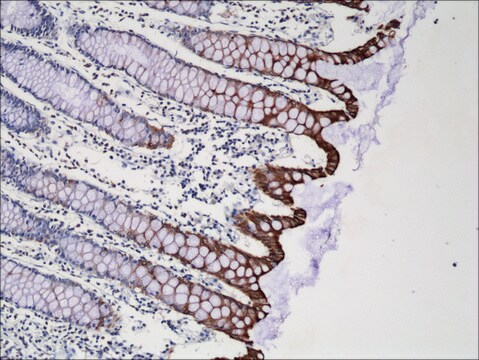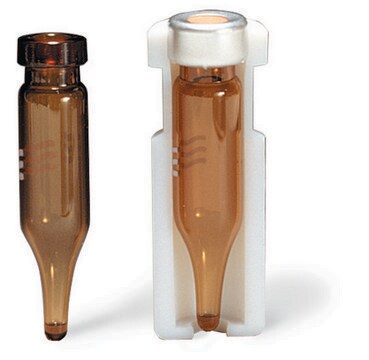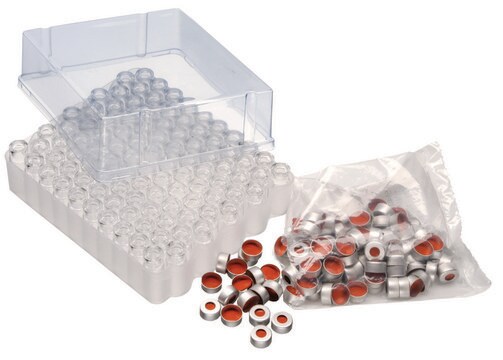MABN318
Anti-Transmembrane Prostatic Acid Phosphatase Antibody/TMPAP, clone 3G10.1
clone 3G10.1, from mouse
Synonim(y):
Prostatic acid phosphatase, PAP, 5′-nucleotidase, 5′-NT, Ecto-5′-nucleotidase, Thiamine monophosphatase, Transmembrane Prostatic Acid Phosphatase, TMPase, ACPP, TMPAP
About This Item
WB
western blot: suitable
Polecane produkty
pochodzenie biologiczne
mouse
Poziom jakości
forma przeciwciała
purified immunoglobulin
rodzaj przeciwciała
primary antibodies
klon
3G10.1, monoclonal
reaktywność gatunkowa
human
metody
immunohistochemistry: suitable (paraffin)
western blot: suitable
izotyp
IgG1κ
numer dostępu NCBI
numer dostępu UniProt
Warunki transportu
wet ice
docelowa modyfikacja potranslacyjna
unmodified
informacje o genach
human ... ACPP(55)
Opis ogólny
Specyficzność
Immunogen
Zastosowanie
Neuroscience
Jakość
Western Blotting Analysis: 4 µg/mL of this antibody detected this antibody detected Transmembrane Prostatic Acid Phosphatase/TMPAP in 200 µg of human prostate tumor tisssue lysate.
Opis wartości docelowych
Postać fizyczna
Przechowywanie i stabilność
Inne uwagi
Oświadczenie o zrzeczeniu się odpowiedzialności
Nie możesz znaleźć właściwego produktu?
Wypróbuj nasz Narzędzie selektora produktów.
Kod klasy składowania
12 - Non Combustible Liquids
Klasa zagrożenia wodnego (WGK)
WGK 1
Temperatura zapłonu (°F)
Not applicable
Temperatura zapłonu (°C)
Not applicable
Certyfikaty analizy (CoA)
Poszukaj Certyfikaty analizy (CoA), wpisując numer partii/serii produktów. Numery serii i partii można znaleźć na etykiecie produktu po słowach „seria” lub „partia”.
Masz już ten produkt?
Dokumenty związane z niedawno zakupionymi produktami zostały zamieszczone w Bibliotece dokumentów.
Nasz zespół naukowców ma doświadczenie we wszystkich obszarach badań, w tym w naukach przyrodniczych, materiałoznawstwie, syntezie chemicznej, chromatografii, analityce i wielu innych dziedzinach.
Skontaktuj się z zespołem ds. pomocy technicznej